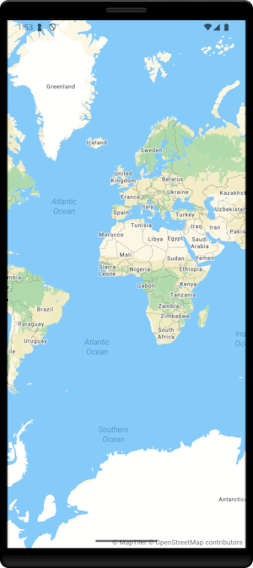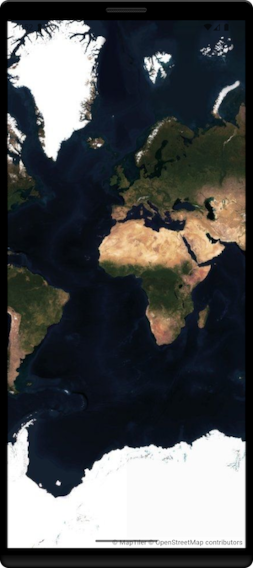Getting Started - Kotlin SDK
MapTiler SDK Kotlin is a set of tools for creating and customizing maps on Android using Kotlin and Jetpack Compose (with an XML/View option, too). It works with the MapTiler Cloud service to provide vector tiles, styles, and data for a complete mobile mapping experience.
In this guide you will learn how to add a custom map to your application, style it to your own liking, add points of interest and enable interaction.


First Steps
-
Android Studio: create a new project or open an existing one (Compose and XML/View are supported).
-
Add the dependency from Maven Central in your app’s Gradle:
dependencies { implementation("com.maptiler:maptiler-sdk-kotlin:1.0.0") } -
Ensure mavenCentral() is included in your repositories.
-
Set your MapTiler Cloud API key before initializing the map:
MTConfig.apiKey = "YOUR_API_KEY"
Map Initialization
Compose
Add the composable MTMapView with a controller:
@Composable
fun MapScreen(context: Context) {
val controller = remember { MTMapViewController(context) }
MTMapView(
referenceStyle = MTMapReferenceStyle.STREETS,
options = MTMapOptions(),
controller = controller,
modifier = Modifier.fillMaxSize(),
)
}
XML/View Classic
Add MTMapViewClassic to your XML layout:
<com.maptiler.maptilersdk.map.MTMapViewClassic
android:id="@+id/classicMapView"
android:layout_width="match_parent"
android:layout_height="match_parent" />
Initialize in your Activity/Fragment:
class MapViewClassicActivity : ComponentActivity() {
private lateinit var controller: MTMapViewController
override fun onCreate(savedInstanceState: Bundle?) {
super.onCreate(savedInstanceState)
controller = MTMapViewController(this)
setContentView(R.layout.classic_map_activity)
val mapView = findViewById<MTMapViewClassic>(R.id.classicMapView)
mapView.initialize(
referenceStyle = MTMapReferenceStyle.STREETS,
options = MTMapOptions(),
controller = controller,
styleVariant = null,
)
}
}
MapView Delegate
Set a delegate on MTMapViewController to react to lifecycle and data events:
controller.delegate = object : MTMapViewDelegate {
override fun onMapViewInitialized() {
/* set up style/annotations */
}
override fun onEventTriggered(event: MTEvent, data: MTData?) {
/* handle events */
}
}
Interaction
You can interact with the map by calling the methods on the MTMapViewController object.
Zooming
controller.zoomIn()
controller.zoomOut()
Navigating
val target = LngLat(8.581651, 47.137765) // LngLat(lon, lat)
controller.flyTo(MTCameraOptions(target))
controller.easeTo(MTCameraOptions(target))
POIs
To add a point of interest on the map, you can use MTMarker and MTTextPopup classes.
val marker = MTMarker(LngLat(8.581651, 47.137765), Color.RED)
controller.style?.addMarker(marker)
val popup = MTTextPopup(LngLat(8.581651, 47.137765), "Hello!")
controller.style?.addTextPopup(popup)
Location Tracking
If your app uses device location, add Android permissions and handle runtime consent:
-
Manifest: ACCESS_FINE_LOCATION (and/or ACCESS_COARSE_LOCATION)
-
Runtime: request permission before enabling any location-related UI or logic.
Location tracking is done through MTLocationManager class. Add the manager and subscribe to its delegate:
val locationManager = remember(context) { MTLocationManager(context) }
DisposableEffect(Unit) {
locationManager.delegate = object : MTLocationManagerDelegate {
override fun didUpdateLocation(location: Location) {
val lngLat = LngLat(location.longitude, location.latitude)
}
}
onDispose {
locationManager.stopLocationUpdates()
locationManager.delegate = null
}
}
Start the location updates:
if (locationManager.hasLocationPermission()) {
locationManager.startLocationUpdates()
}
Next Steps
To learn about more advanced functionalities of the SDK, refer to the API reference and README.md.
In addition to the documentation take a look at the plug and play examples provided in the SDK GitHub repository, as well as pre-made demo app: